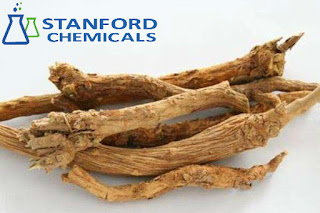Chemical Constituents in Flowers of Polygonum Cuspidatum
The roots of Polygonum cuspidatum contain anthraquinones, flavonoids, coumarin, lignans and some other polyphenols.
At present, many scholars at home and abroad have studied the chemical composition of Polygonum cuspidatum more deeply. In the early study, most of them were concentrated in anthraquinone and two styrene components. These two components are considered to be the main active substances of Polygonum cuspidatum. In recent years, two styrene compounds in Polygonum cuspidatum have been found to have strong antioxidant, antitumor activity and effect on the cardiovascular system, especially the resveratrol, which is the main antioxidant in grape and wine, has been widely recognized, and Polygonum resveratrol has been paid much attention to. Polygonum cuspidatum has become a medical treatment in recent years. One of the hottest plants in the field of medical research has been carried out in many aspects. In the process of finding insecticidal active substances from plants, we found that the flower of Polygonum cuspidatum has very significant toxic activity to the flies. It shows the behavior of attraction, feeding, excitement, paralysis, convulsion, death, and shrivelled insect body.
In order to better study and develop the medicinal resources of Polygonum cuspidatum, a study was conducted on the chemical constituents of the flower of Polygonum cuspidatum. 16 compounds were separated, which were identified as beta-sitosterol, aloe-emodin, physcion, emodin, daucosterol, chrysophanol, luteolin, kaempferol, anthraglycoside B, Rhein. apigenin, hesperetin, 4-hydroxyacetophenone, rutin, sucrose, genistein.
The fast release solid dispersion (SD) of Polygonum cuspidatum extract (PCE) was prepared by hot melt extrusion technology to improve the dissolution of its effective components in vitro, and to explore the applicability of the hot melt extrusion technology in the preparation of the extract SD of Chinese medicine. The preparation process was optimized by single-factor test, and differential scanning calorimetry (DSC), X-ray diffraction (XRD) and Fu Liye transform were used. The best SD was characterized by infrared spectroscopy (FTIR) and scanning electron microscopy (SEM).
The best preparation process is: the screw speed is 120 r/min, the barrel temperature is 160 degrees, and the cooling method is liquid nitrogen cooling. The dissolution rate of PCE-SD, resveratrol and emodin under the optimized conditions were significantly improved, and PCE was dispersed in the carrier in amorphous form. PCE rapid release SD can be prepared by hot melt extrusion technology to improve the dissolution of resveratrol and emodin.
For more information, please visit http://www.stanfordchem.com/





Comments
Post a Comment